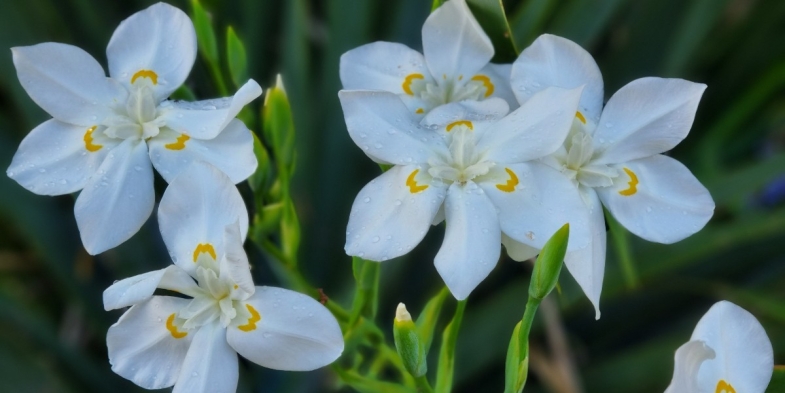 Pictured is a first time flowering for our 6-year-old Lord Howe wedding lily, bought originally at Wirreanda Nursery.
Pictured is a first time flowering for our 6-year-old Lord Howe wedding lily, bought originally at Wirreanda Nursery.
Huge mystery surrounds this species, Dietes robinsoniana, which is incredibly disjunct and all of its near relatives are South and East African – you may have D. grandiflora and/or D. bicolor in your garden and the former is widely used in landscaping (and is also a tough and troublesome weed). But how did a species of the genus jump two oceans with no obvious links and no near relatives?
Lord Howe is the remnant of a 7 million year old Hawaiian-type shield volcano of basaltic composition and it sits on the western edge of Zealandia, a largely-submerged continent and our nearest continental neighbour. That date captures the plant's older time bracket and Lord Howe was never part of much older Gondwanaland wherein the plant might have got there by land.
Nobody seems to have published a solution. The Wikipedia entry is the best and it cites a Dietes paper by Peter Goldblatt of Missouri Botanic Gardens who tries to put D. robinsoniana into context, suggesting a connection via India when the continents were merged but was clearly unaware of the nature and age of Lord Howe. But interestingly he also concluded that D. robinsoniana is the most primitive of the genus and possibly ancestral to the rest – how about that for a brain stretch?
John Martyn

